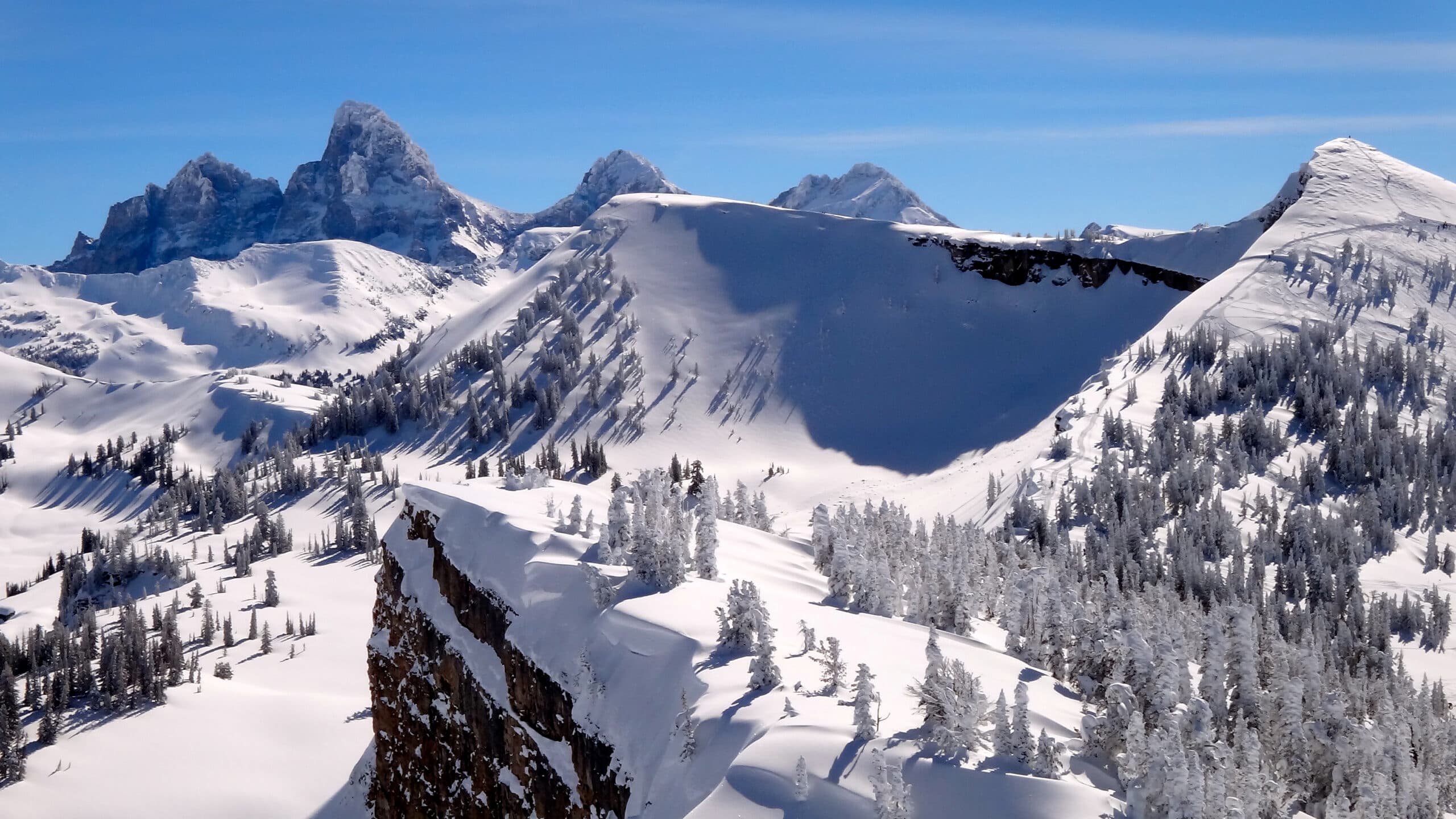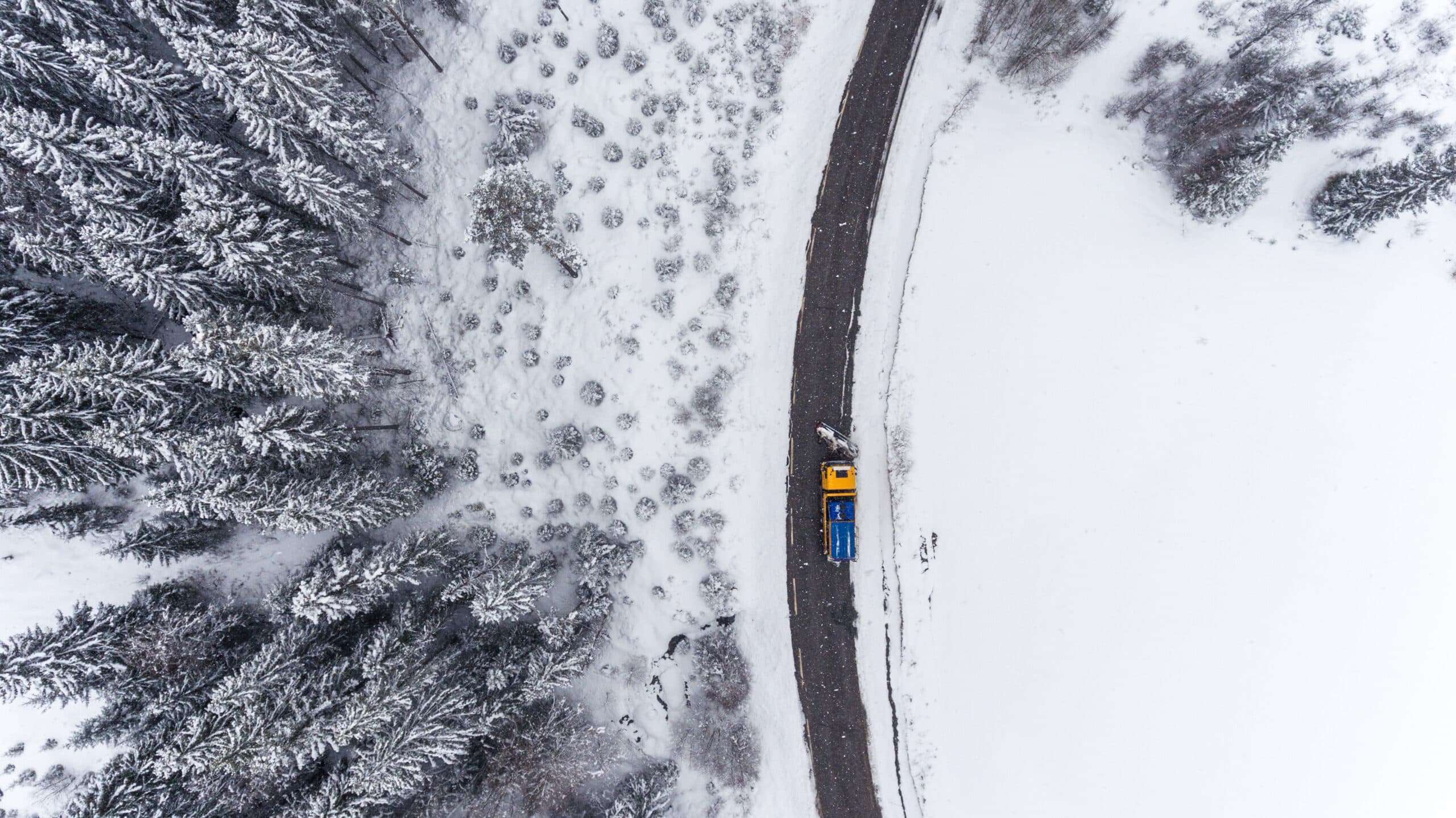A Patchwork of Plowing

While we sleep, these drivers battle the deep
Blaine Ball’s winter mornings start while most of us are sleeping—not predawn eye flutters asleep, but drooling on the pillow asleep, unconsciously stealing blankets from your partner asleep.
While we’re stacking zzzz’s, if snow is stacking up, Blaine, the former field supervisor and plow driver for the City of Victor, is pushing through snooze alarms. “We check at 1 a.m. and make a determination so that we can actually be hitting the road by 2 a.m.,” he says. Blaine is now the Teton County Road and Bridge supervisor.
At the same time, or close enough for those of us in the Sandman’s realm, dozens of other plow drivers hop in their rigs for the cities of Driggs and Tetonia, the Wyoming Department of Transportation (WYDOT), and the Idaho Department of Transportation. “Our goal is to get most of the major roads open before people start heading to work between seven and eight o’clock in the morning,” says Darryl Johnson, public works director for Teton County, Idaho.
Things haven’t always been this way. Snow removal as a government service in the United States is about a century old, roughly the same age as jazz music, Band-Aids, and vacuum cleaners. The first known snowplow was piloted behind a horse-drawn cart in Milwaukee in 1862. In the following decades, snow-removal devices improved, moving from the horse-drawn plow to a horse-drawn roller, a large drum that flattened snow on walking paths; to plows on train engines; and, finally, in the 1920s, to a plow blade on an automobile.
That last iteration led, over the course of a century, to modern hydraulically controlled plows. Today’s drivers can use small-to-medium-sized blades, which attach with brackets to pickup trucks, or commercial grade plows that include standard blades, grader wings for shaving tall snowbanks, and rotary plows (think a snowblower on steroids times two).
In Teton Valley, a patchwork of agencies divides roads by jurisdiction. The county employs nine drivers within the County Road and Bridge Department who collectively are responsible for more than two hundred miles of roads. Towns plow within their city limits, the state of Idaho covers major highways, and WYDOT plows Highway 22 over Teton Pass, a crucial artery for Teton Valley’s thousands of commuters. Subdivisions and neighborhoods outside town limits are responsible for their own roadways, and most pony up the money to pay a private contractor to provide plowing services.
Public plowers start with the largest roads, then work toward smaller ones, traveling in the most efficient manner. “We do the major and minor collectors and then we all allot the arterials,” Darryl says of county plowing. For those not familiar with public works lingo, those include streets like Ski Hill Road and 5000 South to start. Victor, now with a full public works crew, is starting enhanced plow services this year, which means on days without a big storm, they will remove snow and haul it away. Except during blizzards and drawn-out storms, crews are done by midday, with just enough time to go home, see their families, and hit the sack early to be ready for the next day.

Plough Truck going down Snowy Road

Grand Tetons from Grand Targhee ski area in Idaho

Aerial view of road maintance in the winter.
Regarding Teton Pass, WYDOT foreman Troy Jerup says crews hope to make one pass before the morning commute, then at least one driver is on the pass all day, every day. During storms, they simply try to keep pace with precipitation; between dumps, they perform maintenance, clear ice from the road surface, widen the travel lanes with the rotary plow, or grade the banks. WYDOT runs two shifts on the pass, morning and evening, so there’s always coverage except for a few hours at night.
The “schedule”—not always knowing when you’re going to work, waking at 1 a.m., working days on end during storms—can be tough on drivers. Constantly changing work hours means drivers can’t bank on a full night’s sleep. “There’s a lot of times that I’m fighting sleep,” Blaine says. “I’ll just be up for 24 hours, and I’ll sleep the next day.”
In addition to long hours, unpredictable schedules, and lots of overtime, plow drivers say their public interaction can sometimes include fewer grateful ‘thank yous’ and more impassioned complaints: My road hasn’t been plowed. The driver left a berm in my driveway. Plowing makes too much noise in the middle of the night. In part due to such complaints, drivers don’t always think the public understands their job and what they’re doing in those long hours in the dark.
So, what are our responsibilities as residents? Barring becoming heavy-equipment operators ourselves and bolstering driver ranks that have dwindled in recent years, there are a few things we can do. First, leave nothing in the street. Towns forbid on-street parking at night, but trash cans and recycling bins placed in a plow blade’s path require drivers to slow down and go around. Multiplied by dozens of homes, that greatly increases the time it takes to cover a route.
Second, clear the berm left in your driveway. That’s your job, no matter how much you wish it wasn’t. As part of that, don’t push snow back into the street. Snow pushed into the plow’s path can freeze and cause the blade to skip, making it less efficient or prone to breaking.
Third, be careful when passing plows on the street or highway. Troy, the WYDOT foreman, says drivers on the pass often make dangerous passing maneuvers that sometimes force plows to stop completely. Once they’re stopped going uphill, plow operators often need to put on traction chains to resume plowing, creating headaches for them and drivers alike.
Fourth, have empathy. If your road doesn’t look plowed, you might have been first, and during a storm it might have filled back in. Or blizzard conditions might mean plows aren’t running at all. Dealing with the inconvenience of snow-filled roads is simply part of living in a remote mountain town, a decision we implicitly continue to make by staying in Teton Valley. Unlike people living in the mountains at the turn of the twentieth century, however, we don’t have to hitch up a wagon team to go to the market for eggs.
So, the next time you see a plow driver, wave and say thanks, if you can. After all, we’d never get anywhere around here without them.



